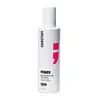What's inside
What's inside
 Key Ingredients
Key Ingredients

No key ingredients
 Benefits
Benefits

 Concerns
Concerns

No concerns
 Ingredients Side-by-side
Ingredients Side-by-side

Water
Skin ConditioningPropanediol
SolventBetaine
HumectantGlycerin
HumectantInulin
Skin ConditioningOlea Europaea Leaf Extract
PerfumingLevulinic Acid
PerfumingTetrasodium Glutamate Diacetate
Syringa Vulgaris Leaf Cell Extract
AntioxidantCaprylhydroxamic Acid
Sodium Levulinate
Skin ConditioningPentylene Glycol
Skin ConditioningCitric Acid
BufferingCyclodextrin
AbsorbentArginine
MaskingCyamopsis Tetragonoloba Gum
Emulsion StabilisingXanthan Gum
EmulsifyingTocopherol
AntioxidantPhytic Acid
Water, Propanediol, Betaine, Glycerin, Inulin, Olea Europaea Leaf Extract, Levulinic Acid, Tetrasodium Glutamate Diacetate, Syringa Vulgaris Leaf Cell Extract, Caprylhydroxamic Acid, Sodium Levulinate, Pentylene Glycol, Citric Acid, Cyclodextrin, Arginine, Cyamopsis Tetragonoloba Gum, Xanthan Gum, Tocopherol, Phytic Acid
Alternatives
Ingredients Explained
These ingredients are found in both products.
Ingredients higher up in an ingredient list are typically present in a larger amount.
Tetrasodium Glutamate Diacetate is a chelating agent. Chelating agents help prevent metal ions from binding to other ingredients. This helps prevent unwanted effects and reactions from a product. These metal ions may come from water and are found in miniscule amounts.
Tetrasodium Glutamate Diacetate can also help other preservatives be more effective.
Water. It's the most common cosmetic ingredient of all. You'll usually see it at the top of ingredient lists, meaning that it makes up the largest part of the product.
So why is it so popular? Water most often acts as a solvent - this means that it helps dissolve other ingredients into the formulation.
You'll also recognize water as that liquid we all need to stay alive. If you see this, drink a glass of water. Stay hydrated!
Learn more about Water